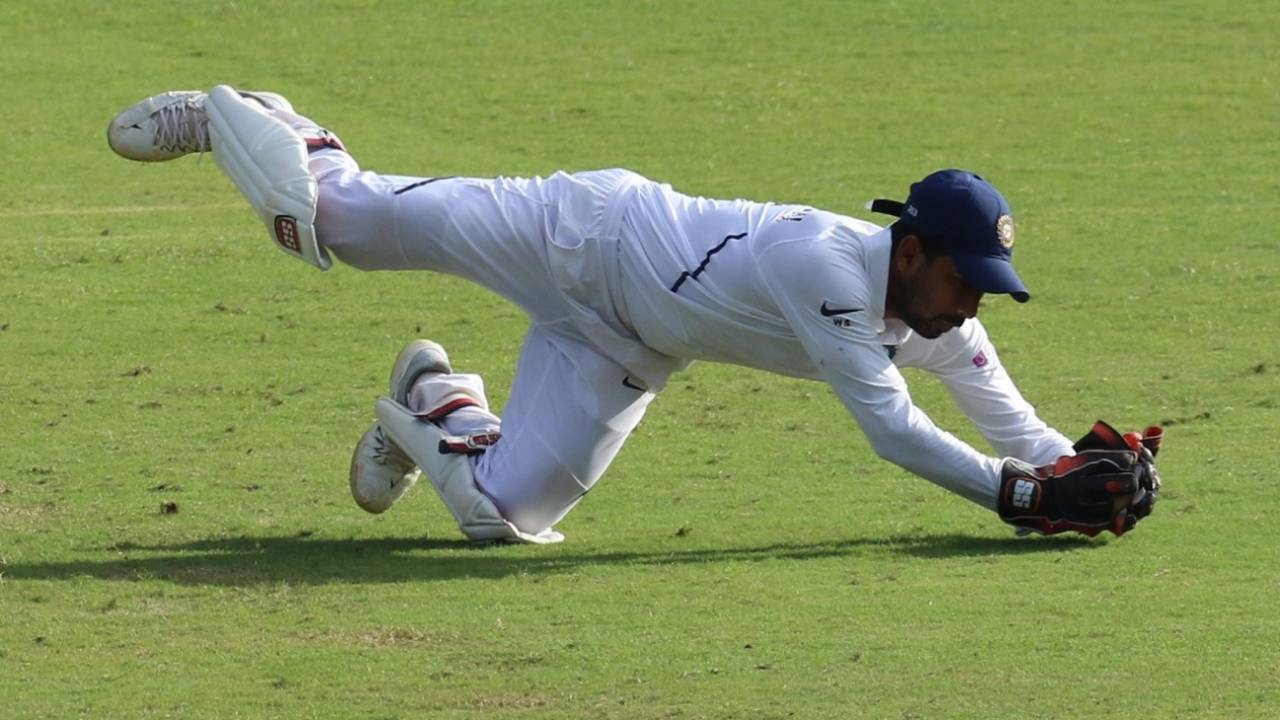Less chance of reverse swing with pink ball - Wriddhiman Saha
India's wicketkeeper also felt visibility may be an issue for the slip cordon
Varun Shetty in Kolkata
20-Nov-2019
Wriddhiman Saha collects low to his left • BCCI
India wicketkeeper Wriddhiman Saha reckons the extra lacquer on the pink ball could affect its ability to reverse swing.
With visibility, particularly during twilight, being such an important peg during a day-night Test, a lot of the preparation has been geared towards how long the pink ball retains its lacquer. A "carpet" outfield and about six inches of grass on the pitch are expected at Eden Gardens for Friday's match, which will increase the amount of time it takes for the ball to get scuffed up. Add dew to the equation, and reverse swing will be harder to induce. Saha suggested.
"I think that there's less chance of reverse swing in this game," he said. "Because of the shine and the wetness. But our bowlers are quite skilled so we have to wait and see."
Saha and Mohammed Shami have previously played in a pink-ball match at this venue, both representing their club Mohun Bagan in the final of the CAB Super League in 2016. Saha said he couldn't remember what the dew situation was in that game, but expected Shami to adjust to any challenges in his current form.
"The ball is not really the factor for Shami, and even the [other fast bowlers]. He has been consistent, and deadly with his reverse swing. We still need to see what happens in the match but, given his form, the ball doesn't matter."
During the training sessions in Indore, the Indians are understood to have been concerned about a few things during their fielding drills. This included the pink ball being slippery due to the extra lacquer, in addition to travelling slightly quicker as compared to the red ball.
It has been an almost unanimous opinion among players that the pink ball is harder to pick up during twilight. While most of that talk has been from batsmen, Saha was wary that the slip cordon would face some challenges of its own. In particular, he mentioned that the colour of the sightscreen was an important factor, and a major difference compared to the experience of playing with the white ball.
"There is black backdrop for the white ball so we have to see how different a white backdrop is going to be," Saha said. "If the background isn't clear for the white ball, it can be difficult to pick for the keeper and slips. With the white ball there's still the feeling that this is a white ball even when it's old. I am not sure how different it is going to be with the pink ball.
"[The biggest challenge] is going to be the slip cordon. There will be more chance of the ball coming to us in a Test match than ODIs or T20s."
At training, both India nets had white sightscreens for the batsmen.
Varun Shetty is a sub-editor at ESPNcricinfo
